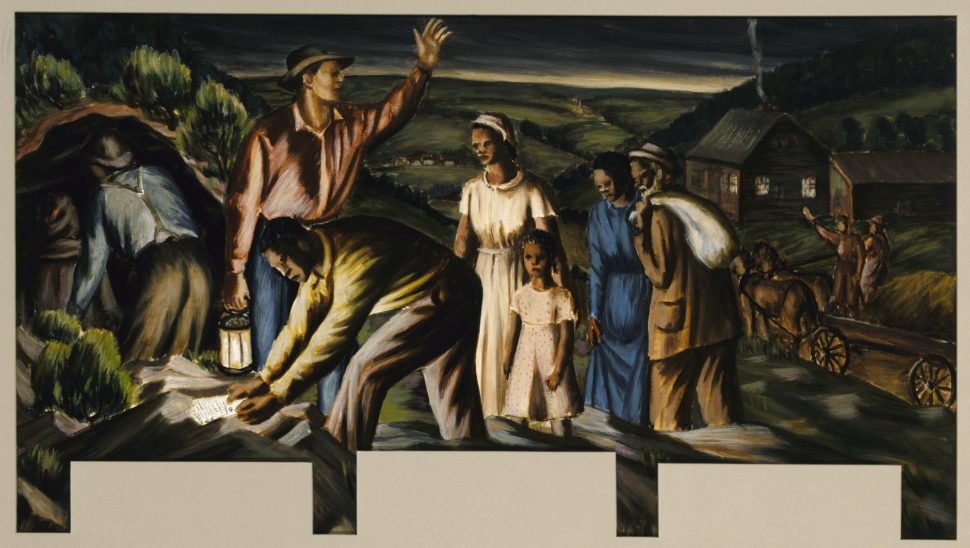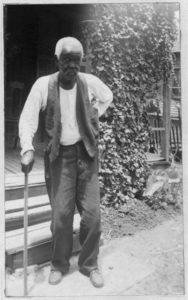Throughout the 1800s, enslaved people in the South fled their plantations and made their way to the Rio Grande, Mexico. The Southbound Underground Railroad has been largely overlooked, mainly because it left so few traces in surviving records. Recently, the Smithsonian published “The Southbound Underground Railroad Brought Thousands of Enslaved Americans to Mexico.” The article shares the story of Diana Cardenas whose family helped runaway slaves in Mexico.

Diana Cardenas’ great-great-great-grandfather was a white man from Alabama named Nathaniel Jackson. Prior to moving to Mexico, Nathaniel married a slave that he freed, Matilda Hicks. Once on the other side of the border in 1845, Nathaniel “bought 5,535 acres of land right here by the river and established the Jackson Ranch…where Black, white and mixed-race people all living together, raising cattle in a place that was very remote, where they could be left alone.”
Cardenas goes on to share that “runaways knew they could get help [at Jackson Ranch]—food, clothing and work if they wanted it. Nathaniel was a nice, generous, courageous man, a humanitarian. He would cross them into Mexico in boats.”
Nathaniel Jackson and Mathilda Hicks were one of a few biracial couples that settled near the Rio Grande and helped slaves in their journey to freedom.

Researchers estimate that anywhere between 5,000 to 10,000 enslaved people escaped from captivity to Mexico between 1821 and 1865. Evidence shows that Tejanos, or Mexicans in Texas, acted as “conductors” on the southern route by helping people get to Mexico.
Enslaved people in the South took this closer route to freedom as the trip to Canada was much more extensive. Mexican Americans, German immigrants, and progressive biracial Black and white couples living along the Rio Grande aided the migration of enslaved people down to Mexico.

Felix Haywood, who lived in San Antonio, TX when he was interviewed in 1941, at the age of 92, offers a clear picture of the views that former slaves had of Mexico.
“Occasionally someone would come along and encourage us to escape north for freedom. We would laugh about it. There was no reason to run north, all we had to do was walk, but walk south, where we would be free as soon as we crossed the Rio Grande (Rio Bravo),” Haywood shared.
“In Mexico, you could be free. They didn’t care what color your skin was: black, white, yellow, or blue. Hundreds of slaves fled to Mexico and did well.”
Although most of the enslaved African Americans who fled to Mexico came from Texas, there are accounts of individuals who crossed the Rio Grande from nearby states such as Louisiana, Mississippi, Alabama, and North Carolina.
In Mexico, Blacks faced considerably less racial prejudice than in the free North. In Mexico, they could hold office, marry locals, and blend comfortably with society.
Mexico became a safe haven for enslaved people soon after it declared independence from Spain in 1821. At the time, Texas was still part of the country. Mexico’s antislavery ignited the Texas Revolution, prompting white, slave-holding immigrants to fight for independence in the Texas Revolution.
Once established as the “The Republic of Texas” in 1836, Texas made slavery legal again, and it continued to be legal when Texas joined the U.S. as a state in 1845.
Despite rewards and push from Texas slave owners seeking their “property,” Mexican authorities never returned or extradited former slaves to the United States. On the contrary, they gave protection to fugitives and did not allow bounty hunters crossing the border to take them back. Some researchers believe this began anti-Mexican sentiments in Texas. Thus proving the flight of slaves from the US to Mexico a critical chapter helping shape the present-day relationship between the two countries.
USC Dornsife historian Alice Baumgartner explains that Mexico fully abolishing slavery in 1837 upset the balance of power between free and slave-holding states. After the Mexican-American War, what is now California, Arizona, New Mexico, and parts of Colorado and Utah joined the Union as free states. This made slave-holding a minority opinion.
“Everything that happens in that decade leading up to the Civil War is southern politicians trying to make sure that they’re not totally outnumbered by free state representatives in Congress,” says Baumgartner. Mexico’s choice to abolish the practice helped set in motion events that would then lead to what we know as the American Civil War.
Related: Africatown, Where The Last Known Slave Ship To The U.S. Was Found, Wants To Attract Tourists





